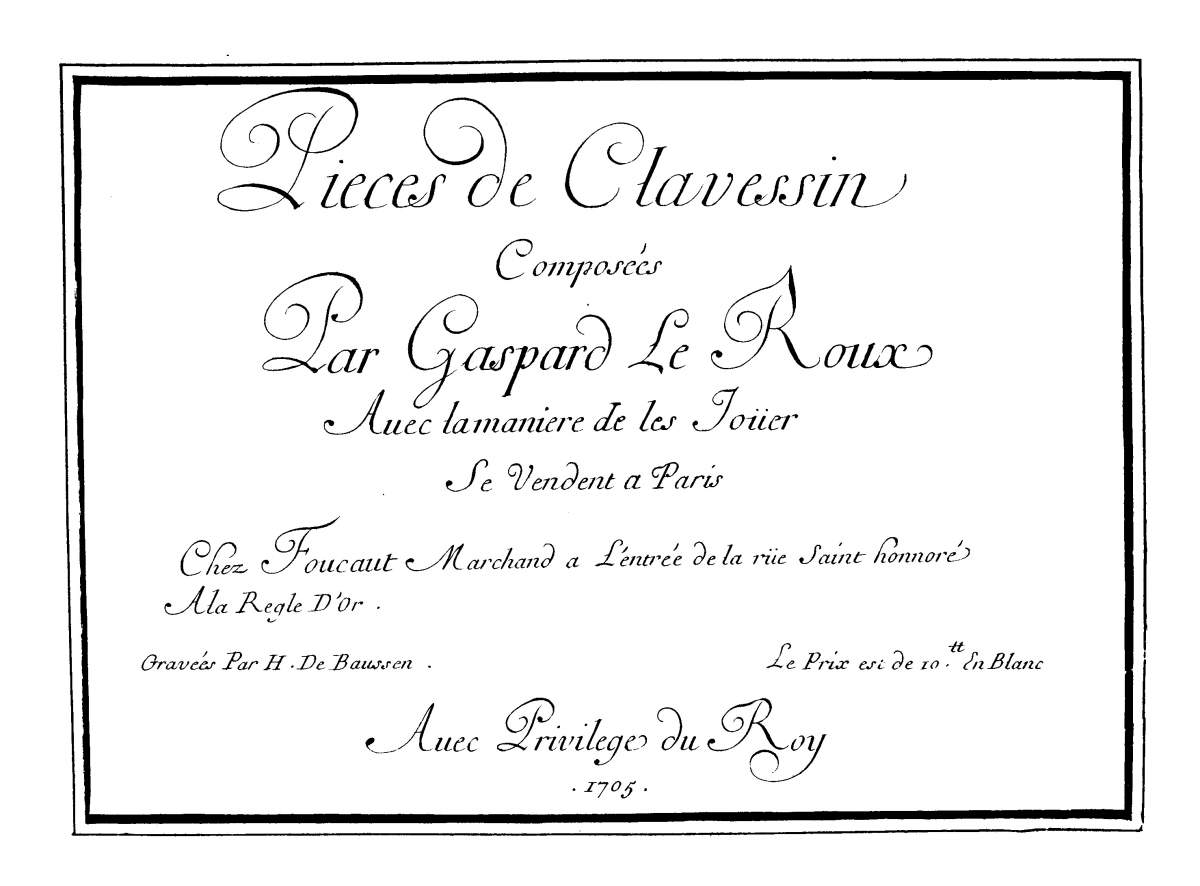
Gaspard Le Roux is one of those composers whose music looms large, but whose life remains in the shadows. While there are sources for a few miscellaneous vocal pieces—an air and a motet for example-Le Roux’s entire legacy is built on his Pièces de clavecin of 1705. His only published collection, Le Roux died in Paris just two years after it came out. Le Roux probably died young. The first time he shows up in the history books is in the March 1690 issue of the Mercure de France which mentions Le roux as a teacher. Aside from his teaching, we know from Le Roux’s taxes that he also earned money as an organist, though in what capacity remains uncertain.
Le Roux was in many ways an innovator, while at the same time, he held onto older styles. His music falls squarely between early French keyboard giants like Chambonnieres, Louis Couperin, and d’Anglebert and the later established 18th century harpsichord composers in France such as François Couperin and Jean Philippe Rameau.
Style Brisée
There are several preludes in Le Roux’s collection composed in the old unmeasured style championed by Louis Couperin. The preludes are only notated in whole notes with some slurs to outline the harmonic patterns. From this, a performer freely improvises rhythm and meter in his or her own interpretation.
We hear the hallmark of this kind of notation, the so called style brisée, or broken style (also called “lute style”) in the opening track of a new recording from harpsichordists Pieter-Jan Belder and Siebe Henstra of the Complete Harpsichord Music of Gaspard le Roux. The style brisee is characterized by an arpeggiation of chords with irregular distribution of individual notes—that is, no notes are to be played simultaneously. It’s enormous fun to listen to unmeasured preludes while following along with the notes in the score (see page 15) as you really get a sense of a performer's individual style.
Johann Sebastian Bach
Gaspard le Roux's Pièces de clavecin were published in Paris as well as in Amsterdam by Etienne Roger. There were also some handwritten copies of the suites circulating in Germany and it seems likely that they made their way to Johann Sebastian Bach. It’s hard not to think that Bach knew these pieces when you hear the first prelude of Bach’s English Suites alongside Le Roux’s A Major gigue.
Harpsichord solo...or duet?
Harpsichordists Pieter-Jan Belder and Siebe Henstra take advantage of Le Roux’s indication in his preface and the examples in his score, that his Pièces de Clavecin can be performed by a solo harpsichord and also as a harpsichord duo using the additionally printed second treble line and continuo figures in the bass.
Why the alternate versions, and what might Le Roux have had in mind? While in actual practice, expanding solo music to chamber music may well have been commonplace, Le Roux’s pieces are the first to notate it so specifically.
There are already a couple recordings of these pieces in their alternate duo versions—Mitzi Meyerson and Lisa Goode Crawford have made a disc. Another harpsichord pair, Glen Wilson and Naoko Akutagawa also have a recording from 2006. Additionally, there’s a solo recording of these pieces by Christophe Rousset. In his preface, Le Roux outlines two other performance options. Besides harpsichord duet, his Piece de Clavecin can also be performed as trios for two melody instruments and basso continuo—with flutes, oboes, or violins for example. Or finally, the harpsichordist can play an accompaniment from the figured bass and sing the top line melody of the trio score. This last option is most likely meant as a practice rather than performance suggestion.
Le Roux’s Tour de force
Without question, Le Roux’s tour de ’force is his Sarabande from the set of pieces in G minor. Like Corelli’s famous La Folia variations, listeners are treated to couplet after couplet of Le Roux’s invention and imagination in this extended 13 minute piece.









